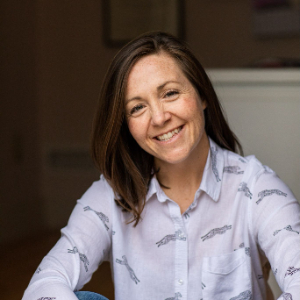
Cultivating Self-Efficacy in Students Through Mistake-Friendly Learning
Self-efficacy is a student's personal judgment of how well they can cope with a given situation. It's a foundational component of resilience and essential for social-emotional development. When students believe in their ability to handle challenges, they're more likely to persevere through difficulties, take healthy risks, and recover from setbacks. Strong self-efficacy doesn't mean students never struggle—it means they trust themselves to navigate struggles and learn from them.
Understanding Self-Efficacy in Education
Consider your own professional experience. As an educator, you want to feel competent and trusted in your abilities without constant judgment— including self-judgment. This same need exists in your students.
The Challenge in Our Classrooms
In education, we often focus intensely on teaching the "correct" method, shaping students into "successful" learners, and managing classroom behaviors. While structure matters, over-emphasis on conformity can inadvertently teach students to abandon their authentic thinking patterns and ways of problem-solving.
Students are capable of far more than we sometimes recognize—they need time, space, and permission to develop their unique approaches. Our goal is to help them cultivate a deep inner sense of capability and worth, even when outcomes aren't perfect.
Breaking Traditional Patterns
This requires shifting away from traditional control-based teaching models. This shift can feel uncomfortable for educators trained in more directive approaches. Yet fostering genuine self-efficacy in students is essential for addressing the rising rates of anxiety and stress we're seeing in young people today.
Let's begin by reframing mistakes as learning opportunities.
This week's classroom practice:
Personal Reflection:
- Notice when you make mistakes during instruction
- Do you feel self-critical?
- Are you harsh with yourself when lessons don't go as planned?
- When you notice these patterns, practice self-compassion and remember that growth happens through experimentation
- When appropriate, acknowledge your mistakes to students—normalize the learning process!
In Your Classroom:
- Observe whether your environment emphasizes perfection or "correct answers" over exploration
- When students offer alternative approaches or solutions, invite them to develop those ideas while also sharing established methods
- Use mistakes—including your own—as teaching moments that humanize the learning process
- Create space for multiple pathways to understanding
Practical Strategies:
- Notice if rigid expectations are creating unnecessary pressure
- When you feel triggered by a student's unconventional approach, pause and breathe before
responding - Practice patience with diverse learning speeds and styles—genuine understanding takes time
- Make eye contact, offer supportive guidance with kindness
Note for Perfection-Oriented Educators: If you tend toward perfectionism (many dedicated educators do), try this approach: When you make an error during instruction, briefly acknowledge it to your class. Respond with lightness or curiosity about what you learned, demonstrating that mistakes are simply part of being human and learning together.
Building self-efficacy means trusting students to develop their own competence while providing the scaffolding they need to feel supported, not controlled.


